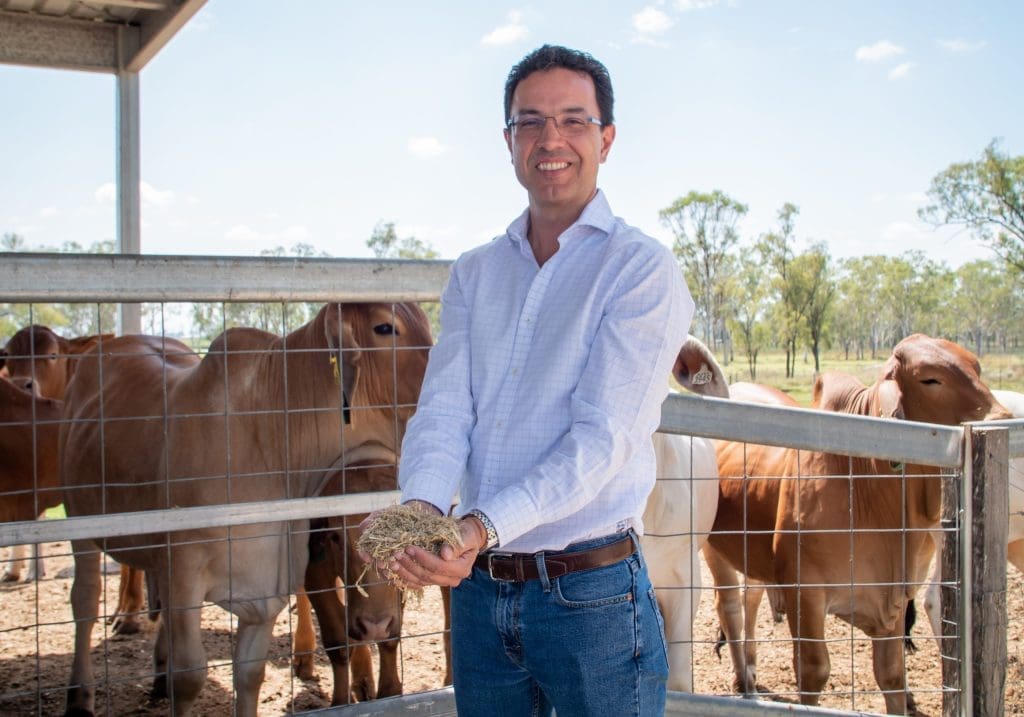
Assoc Prof Luis Prada e Silva
A SIMPLE test to select for nitrogen-efficient cattle is the outcome of years of research at The University of Queensland.
The test uses tail hair samples to identify an animal’s ability to recycle nitrogen, a unique evolutionary trait that effectively allows ruminants to produce extra protein.
Associate Professor Luis Prada e Silva from UQ’s Queensland Alliance for Agriculture and Food Innovation said the collaborative project with the Queensland Department of Agriculture and Fisheries and the Meat & Livestock Australia Donor Company had important applications for producers.
“Selecting animals that are more efficient in using nitrogen would be very useful to increase performance in low protein diets, such as during the dry months in the north,” Dr Prada e Silva said.
“We have demonstrated that the efficiency of the animals is related to their ability to maintain high nitrogen in the body and not lose that in the urine.
The trait has about 40 percent heritability, which opens a new door for genetic selection.
“We can also use this trait to identify animals that will respond to an M8U supplement, which potentially allows primary producers to separate animals that will give a good response from those that won’t,” Dr Prada e Silva said.
Reproductive performance
In a complementary study, also funded by MLA, Dr Prada e Silva said the tail hair test was also able to identify cows with better reproductive performance.
“This is important because better nitrogen efficiency in cows is associated with better body condition score and better fertility,” he said.
 QAAFI Research scientist Dr Karen Eyre said collecting the tail hair was a minimally invasive procedure.
QAAFI Research scientist Dr Karen Eyre said collecting the tail hair was a minimally invasive procedure.
“There are no special storage or transport requirements,” she said.
“We simply collect the samples, bring them back and analyse them for tail hair isotopes. We’re looking for the animals that have less of a certain type of nitrogen in their tail hair.”
She said the hair shaft held a wealth of information.
“This is different to collecting DNA because we don’t need the bulb at the top of the tail hair but can measure the isotope at any part of the hair shaft,” Dr Eyre said.
“If we had a really dry period, we could measure back down the hair shaft and find those animals that are more efficient at using nitrogen during that time and either maintained their weight or at least didn’t lose as much weight as the rest of the herd.”
Dr Prada e Silva said the team would now concentrate on commercialising the findings.
“There are still questions that need to be answered, but the next step is to find a commercial partner to take this into the market and make it available to the beef cattle industry in Australia,” he said.
Source: QAAFI
